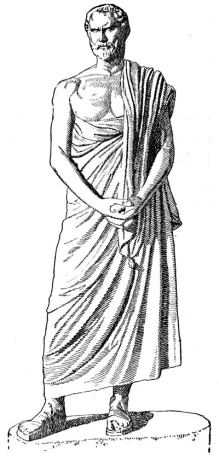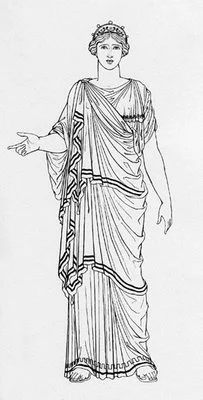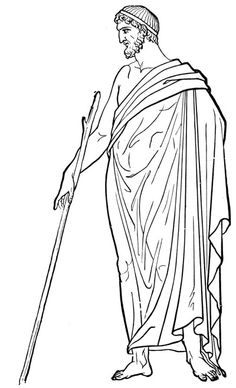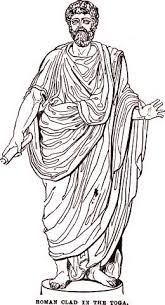Ancient Greek clothing dates back to as early as the 6th Century B.C.E. The garments that they used to wear during that time period consisted of several different items such as the peplos, himation, chiton and strophion. For this project and assignment, the design I have chosen to go with is the men’s himation dress. This garment was a staple clothing item in Greece and the actual main period of time for the himation dress was during the Archaic through the Hellenistic period of 750-30 B.C.E. The himation dress was considered a wrap or a cloak and even a mantle. They were typically made out of heavy fabric like linen and wool and it was typically in the color white. To be more specific, the item of clothing consisted of long rectangular pieces of fabric arranged around the body in many different ways. However, it was most common for the himation to be placed in a diagonal manner on the body. As time had passed on and the Greek times became more sophisticated, the fabric for the himation started to change as well. This is when the himation dress started being made out of silk to add luxury to the clothing.


The garment was used by both men and women and it was used an an outer garment or a cloak. The cloak or himation, was typically also worn over a chiton. As this clothing was considered an outer garment, the himation was used for long journeys. Although there are no physical remains of what a himation looked liked, there is ancient pottery that has suggested that there was colors on them and those colors would vary. At times, the himation was simple and at others, it was dyed with bright colors and covered or bordered with intricate designs that were either woven into the fabric or painted on. For the women, the garment was mostly used over a peplos dress and only they could have their himation in a different color. Those colors could range from white to pink or red. When men would wear the himation, it was either on its own or over a chiton. Men typically wore them more than women and that was before the end of the Archaic Period, which was around 500 B.C.E. and after that, it was when it became something frequently worn by women. As it is shown in the above representational pictures of the himation dress, men’s himation dress wasn’t always full body covered and it reached their ankles. There was a specific reason for the men to have their himation reach their ankles. This was done because if it was dragging, that was considered having poor taste. Also, for a man’s himation dress, if the shoulder was bare, that was a sign of barbarism and in order to do it successfully, the men would have to carefully wrap it around their left shoulder. For women, the himation dress was full body covered and was at ground level. The women were more easy going with their himation dress and they didn’t put it on in a particular manner. When talking about the Greek himation dress and taking things into consideration, we must also think of Ancient Roman times. The reason for this is because we can try to compare them both. That is because the Greek Himation dress has similarities to the Roman Toga.


As you can see, the way the fabric is placed on their bodies suggest that they shared the same aspects of how their clothing should be worn. Of course, they are placed differently, but the similarities are equal.


I have above, pictures of the process of the himation dress being made and I had made the decision for this assignment to keep it simple because I didn’t want to ruin a traditional and historical piece of clothing and also because the men’s himation dress was exactly that simple and plain. All I really wanted was to keep it as authentic as possible. The himation I have chosen to recreate is made with a white muslin fabric and as in ancient times, it is made with large rectangular pieces. I have chosen to pin it all together by sewing the entire piece up by the left shoulder to keep the garment in place.
Works Cited:
Saugat Adhikari. Ancient History Lists. http://www.ancienthistorylists.com/greek-history/top-10-famous-clothes-ancient-greece/. Accessed 9 September 2016
The Editors of Encyclopedia Britannica. Encyclopedia Britannica. https://www.britannica.com/topic/himation. Accessed 9 September 2016
Department of Greek and Roman Art at The Metropolitan Museum of Art. October 2003. http://www.metmuseum.org/toah/hd/grdr/hd_grdr.htm. Accessed 9 September 2016
Encyclopedia of Fashion. Fashion Encyclopedia. http://www.fashionencyclopedia.com/fashion_costume_culture/The-Ancient-World-Greece/Himation.html. Accessed 9 September 2016.
Pauline Weston Thomas. Fashion-Era. 14 October 2008. http://www.fashion-era.com/ancient_costume/ancient-greek-dress-chiton.htm#The_Greek_Cloak,_Chlamys_or_Himation_. Accessed 9 September 2016.